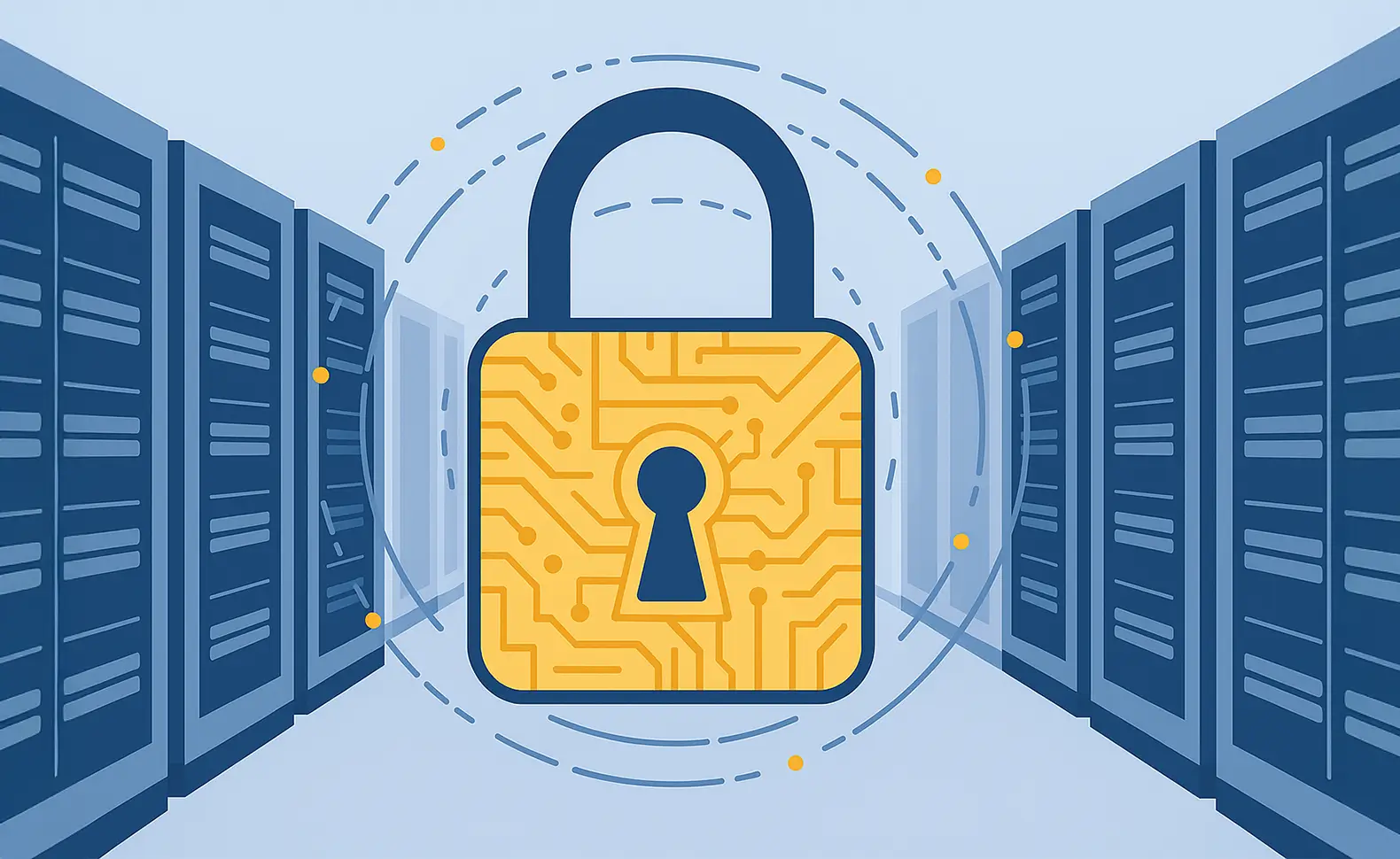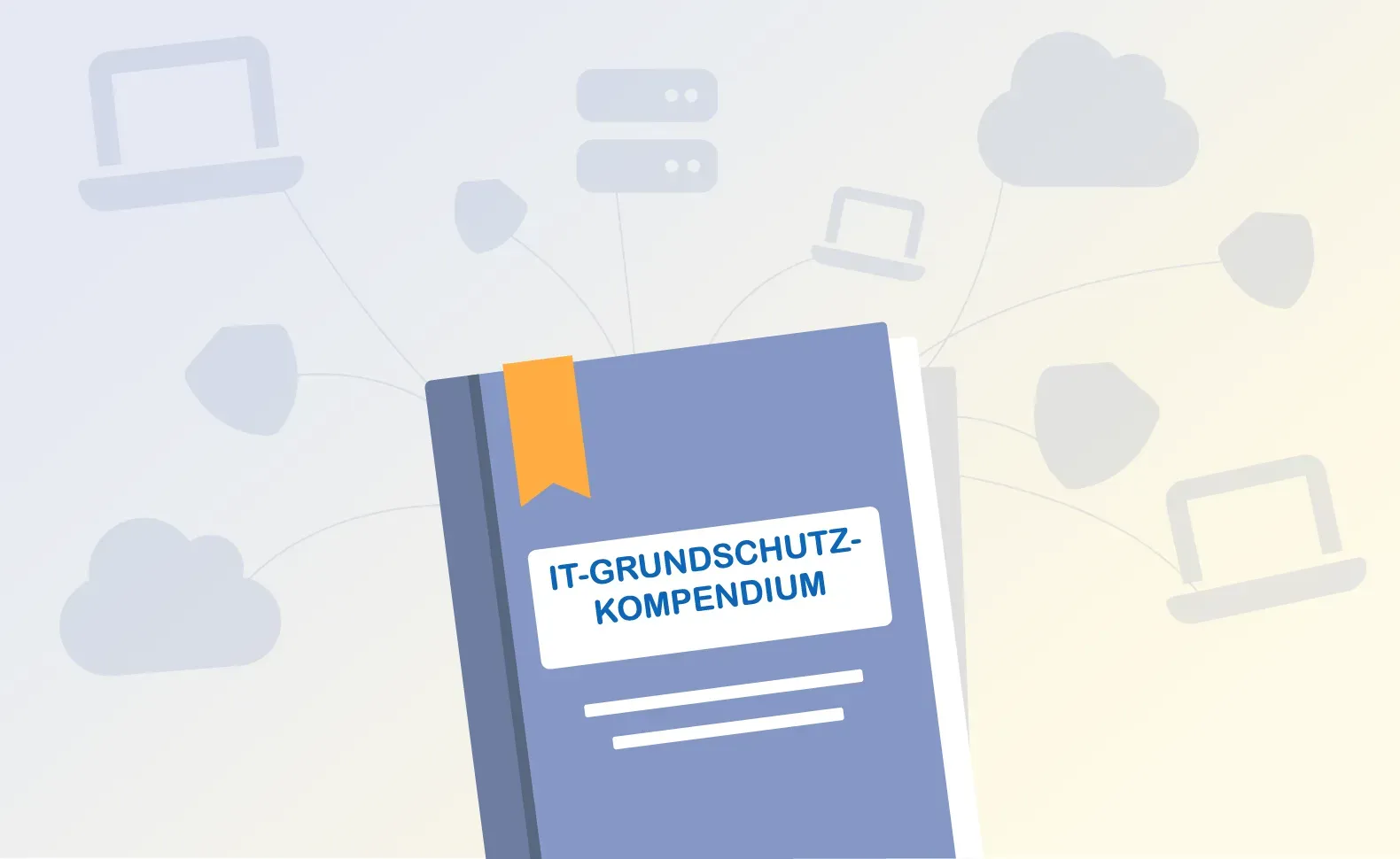The most important thing in brief:
- What is basic IT protection?: A systematic approach developed by BSI to secure IT systems, which helps organizations establish a uniform and structured level of security.
- Why is basic IT protection important?: It meets legal requirements such as GDPR and NIS2, protects against cyber threats and creates sustainable information security.
- How can basic IT protection be implemented?: IT security is implemented effectively and comprehensibly through structured methods such as protection requirements analysis, modelling and continuous control.

What is basic IT protection? A definition
The term Basic IT protection describes a systematic procedure for securing IT systems, processes and information in organizations. It was developed by Federal Office for Information Security (BSI)to offer a practical and scalable security concept for companies and authorities.
The aim of basic IT protection is to create a uniform level of security that is based on proven best practices. It enables organizations to set up holistic information security management, step by step and in line with their individual protection needs. The method is designed in such a way that it can be used by small companies as well as by large corporations and public authorities.
A central feature of basic IT protection is modularity: With defined components and risk catalogs, it can be flexibly adapted to different IT environments. In this way, it not only supports the identification of risks, but also in the structured selection and implementation of suitable security measures.
Why is basic IT protection necessary?
1. Regulatory Requirements and Compliance
Especially since the introduction of GDPR, of IT Security Act 2.0 and the new EU directive NIS 2 Companies are required to implement appropriate technical and organizational measures to protect their IT systems. The BSI IT basic protection is considered recognized proof of compliance with these requirements.
2. Protection against increasing threats
Cyber attacks are becoming more complex and targeted. The Grundschutz IT provides protection against typical threats such as:
- ransomware
- Social Engineering
- Insider attacks
- misconfigurations
3. Establish sustainable information security
Instead of selective individual measures, IT Grundschutz pursues a holistic approach. Information security is thus integrated into the company's DNA.
Development and structure of basic IT protection
Basic IT protection is divided into three central components:
1. IT Basic Protection Compendium
that IT Basic Protection Compendium forms the core and contains concrete measures, standard scenarios and recommendations. It is divided into topics such as infrastructure, applications, emergency management and personnel.
2nd IT basic protection methodology
This describes the specific implementation procedure:
- structural analysis
- Protection requirement assessment
- modeling
- Implementing measures
- Performance monitoring
3rd IT Grundschutz certification
Companies can have their IT security certified by the BSI. This increases credibility with partners, customers, and regulators.
Basic IT protection in practice: challenges and solutions
The theory sounds good, but how can it be implemented in practice?
A medium-sized mechanical engineering company with around 150 employees is the victim of a cyber attack. The attackers gain access to central servers, encrypt data and shut down production. It is only days later that the systems can be gradually restored. The result: significant financial damage, loss of customer confidence and increased explanatory pressure to the supervisory authorities. During the follow-up, it turned out that there was no structured basic IT protection. Documentation, risk analyses and an emergency plan were missing.
Unfortunately, this situation is not an isolated case. Small and medium-sized companies in particular are often insufficiently prepared. The Basic IT protection provides a tried and tested framework for implementing IT security systematically, comprehensibly and efficiently.
Common challenges:
- Lack of transparency about the IT infrastructure
- Shortage of time and resources in the IT team
- Inadequate documentation of existing systems
- Difficulty in objectively evaluating risks
Solution: Using Docusnap
Our Docusnap software helps companies gain a structured and transparent insight into their IT landscape. Features such as automated IT inventory and IT documentation provide targeted support in implementing the basic IT protection methodology and save valuable time and resources.
Best practices for implementing basic IT protection
- Involve management
Information security is a top priority. Without management support, projects quickly fall into thin air. - Start small steps
Start with a limited scope (e.g. a location or a specialist department). Gain experience and scale gradually. - Establish Docusnap as a central tool
Take advantage of the software's capabilities to automate processes, save resources and improve quality. - Continuous update and control
IT basic protection is not a one-off project. The level of safety can only be maintained through regular checks.
Conclusion: Basic IT protection with system and software
Basic IT protection is not a rigid set of rules, but a practical tool for effectively and sustainably anchoring information security in the organization. It helps to minimize risks, meet legal requirements and strengthen the trust of customers and partners.
With Docusnap Companies have a powerful tool at their disposal that automates many of the complex steps and thus saves resources. If you want to secure your IT infrastructure in a structured way, there is no way around basic protection and well-thought-out documentation.
The next steps:
The free trial version of Docusnap provides you with the ideal basis for closing security gaps, analyzing protection requirements and meeting legal requirements
Try Docusnap now


